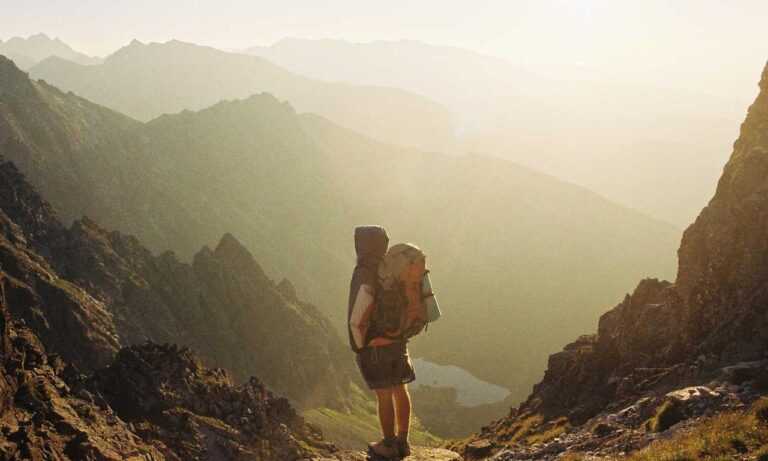Understanding Eco Tourism
Eco tourism involves travel to natural areas that conserve the environment and improve the well-being of local people. It offers an authentic experience connecting visitors with nature while promoting sustainable practices.
What Is Eco Tourism?
Eco tourism focuses on responsible travel to pristine natural spaces. It aims to minimize negative impacts on ecosystems and local cultures, promoting cultural and environmental awareness and respect. Often travelers engage in activities like bird watching, hiking, or guided wildlife tours.
- Minimize Impact: Eco tourism should reduce negative effects on the environment. This includes conserving natural resources and using eco-friendly transportation and accommodations.
- Build Environmental Awareness: It educates travelers about their surroundings, fostering greater respect and understanding of nature.
- Provide Direct Financial Benefits: Eco tourism must give economic benefits to conservation efforts and local communities. Entrance fees or donations often contribute to local conservation projects.
- Support Human Rights: It promotes respect for local cultures. This includes respecting indigenous traditions and supporting community involvement in tourism decisions.
- Deliver a Positive Experience: Eco tourism should be gratifying for both visitors and hosts. This ensures sustainable income for locals and an enjoyable, educational experience for tourists.
These principles make eco tourism a powerful tool for protecting wildlife and fostering sustainability.
The Impact of Eco Tourism on Wildlife Conservation

Eco tourism plays a crucial role in wildlife conservation by directly supporting preservation efforts. Through responsible travel, eco tourists contribute to safeguarding natural habitats.
Direct Benefits to Conservation Efforts
Eco tourism generates funds that finance conservation projects. Admission fees, guided tours, and donations provide crucial revenue. For instance, Serengeti National Park uses tourism fees to fund anti-poaching units and research on endangered species.
Educational programs offered by eco tours raise awareness about wildlife protection, encouraging environmentally friendly behaviors among tourists.
Local communities gain economic incentives to preserve wildlife since their livelihoods depend on sustainable tourism. In Costa Rica, local guides who rely on eco tourism advocate for rainforest conservation.
Challenges and Limitations
Despite its benefits, eco tourism faces challenges. It can cause ecological disturbances if not managed properly. Overcrowding of pristine areas can lead to habitat degradation and stress to wildlife.
Regulatory frameworks often fail to keep up with increasing tourist numbers, compromising conservation goals. Another limitation is the uneven distribution of economic benefits, sometimes leaving local communities marginalized.
Inadequate infrastructure and limited resources can hinder effective conservation despite tourism revenue. Addressing these issues requires ongoing commitment and cooperation among stakeholders to ensure eco tourism remains sustainable.
Case Studies: Success Stories Around the World
Eco tourism has led to remarkable wildlife conservation efforts globally. Here are a few notable examples:
Africa’s Eco Lodges and Wildlife Preservation
Africa presents numerous examples of eco lodges contributing to wildlife preservation. In Kenya, sustainable lodges like Ol Donyo Lodge support conservation through eco-friendly architecture and community engagement.
The lodge funds the Big Life Foundation, which aids in anti-poaching and wildlife monitoring efforts. Similarly, Botswana’s Chobe Game
Lodge invests in solar power and bio-digesters to reduce environmental impact while funding local anti-poaching units. These initiatives help reduce human-wildlife conflicts and enhance habitat conservation.
Central America’s Rainforest Protection Initiatives
Central America exemplifies rainforest protection through eco tourism. Costa Rica leads with its eco-friendly hotels and guided nature tours.
The Monteverde Cloud Forest Reserve, one of the most prominent examples, reinvests tourism revenue into conservation projects, protecting over 35,089 acres of forest.
In Belize, the Community Baboon Sanctuary involves over 230 private landowners, ensuring the protection of the howler monkey habitats. These initiatives improve biodiversity and foster sustainable livelihoods for local communities.
Strategies for Enhancing Eco Tourism’s Role in Conservation
Eco tourism can strengthen wildlife conservation through targeted strategies. Key areas include government policies, community involvement, and education.
Government Policies and Regulations
- Government policies and regulations are crucial for fostering eco tourism and wildlife conservation.
- Strict zoning laws, protected area mandates, and stringent wildlife protection regulations ensure that eco tourism activities don’t harm the environment.
- In Costa Rica, government policies restrict access to sensitive areas during breeding seasons of certain species, allowing ecosystems to thrive without human interference.
Community Involvement and Education
Community involvement and education are essential for the success of eco tourism. Locals gain employment opportunities through sustainable tourism, fostering a sense of ownership in conservation efforts. In Kenya, community-led conservancies work closely with eco lodges to protect wildlife and habitats.
Educational programs raise awareness about the importance of wildlife preservation among tourists and locals alike, creating a unified effort towards conservation. Initiatives in Costa Rica involve locals as tour guides, educating them on biodiversity and conservation principles.









































































































































































































































































































































































































































































































































































































































































































































 Edward Kindler - Eco-Tourism Advocate & Contributor at Green Commerce Haven
Edward Kindler is a passionate eco-tourism advocate and a dedicated contributor to Green Commerce Haven. With a background in sustainable travel and a deep love for nature, Edward specializes in sharing insights on eco-tourism tips and environmentally responsible travel practices. His expertise helps guide readers in exploring the world while minimizing their environmental impact. Edward’s contributions to Green Commerce Haven reflect his commitment to promoting travel experiences that honor and protect the natural world.
Edward Kindler - Eco-Tourism Advocate & Contributor at Green Commerce Haven
Edward Kindler is a passionate eco-tourism advocate and a dedicated contributor to Green Commerce Haven. With a background in sustainable travel and a deep love for nature, Edward specializes in sharing insights on eco-tourism tips and environmentally responsible travel practices. His expertise helps guide readers in exploring the world while minimizing their environmental impact. Edward’s contributions to Green Commerce Haven reflect his commitment to promoting travel experiences that honor and protect the natural world.
